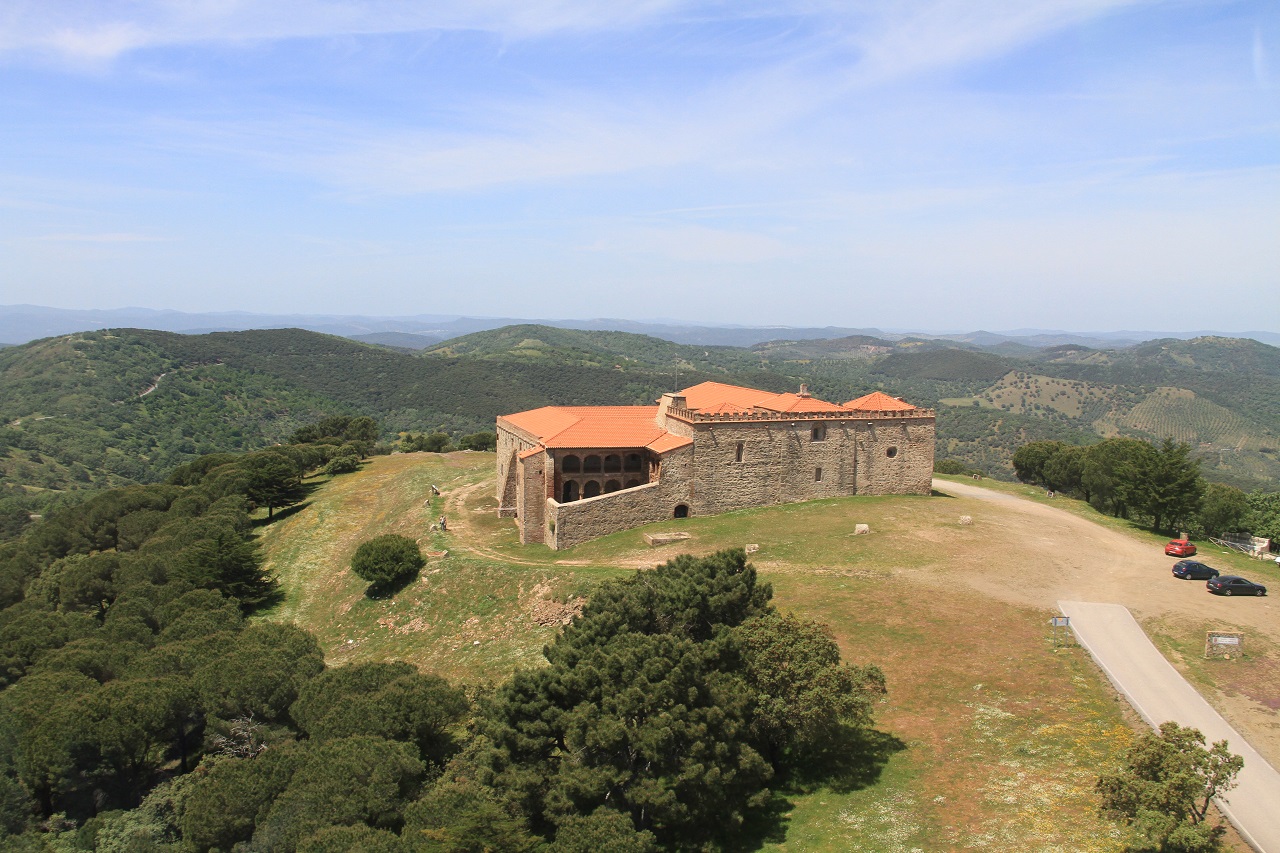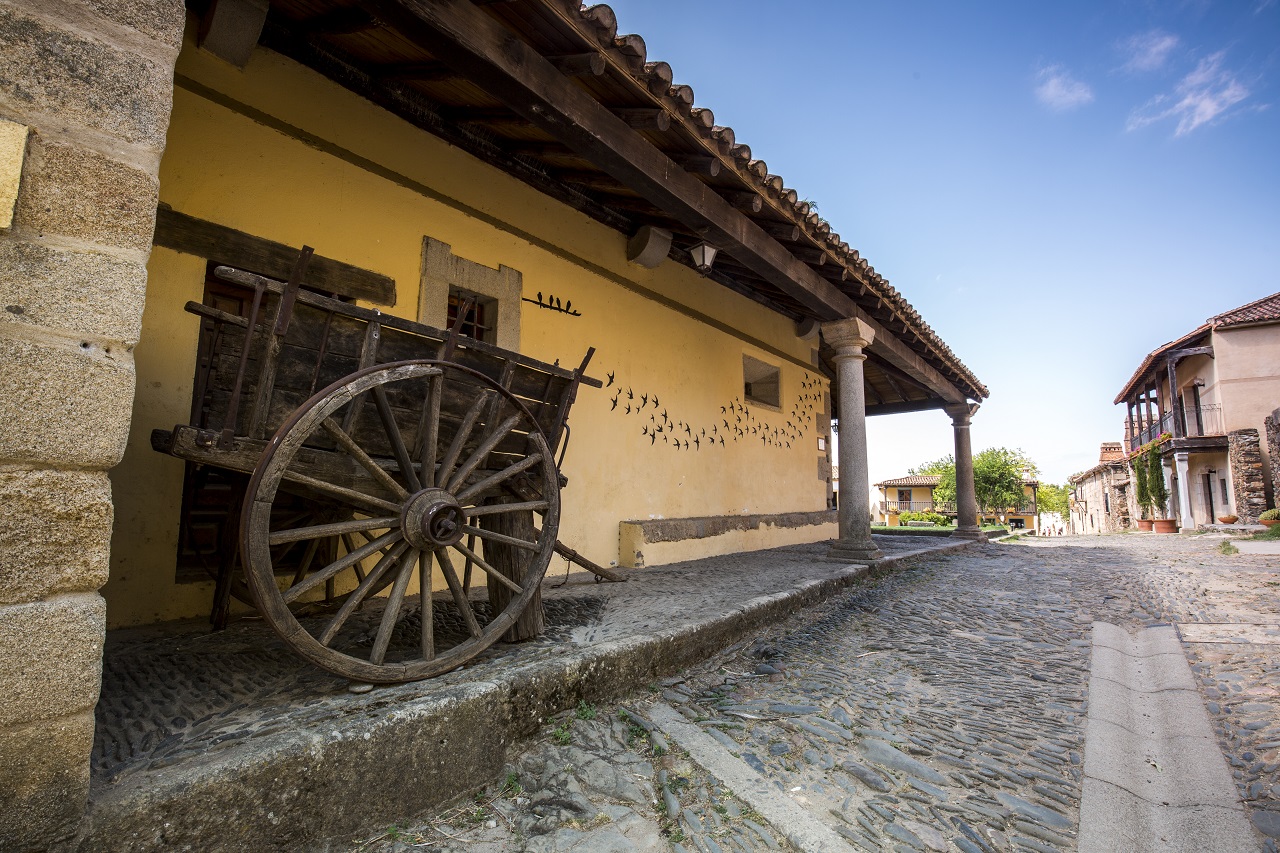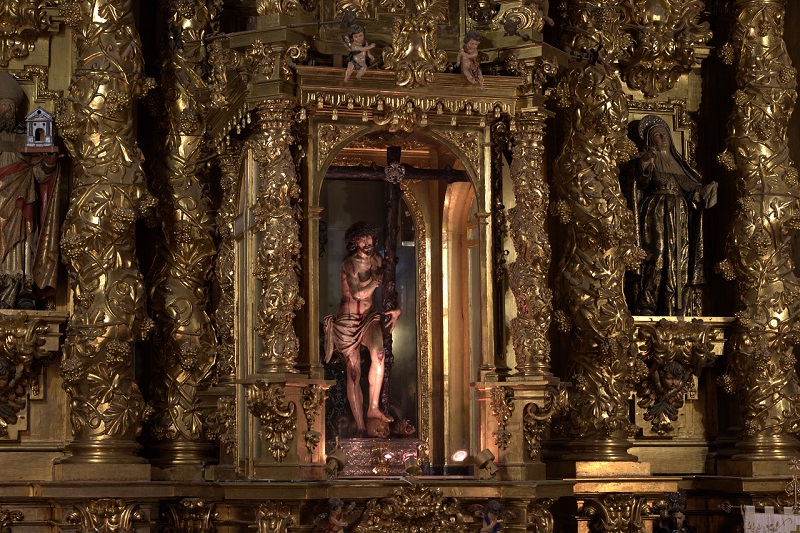Art and culture
Hidden Treasures
These monuments, albeit seldom visited by most tourist, are true gems due to their artistic and cultural value.
- Come to Extremadura
- Tesoros ocultos
Historical heritage
These monuments, albeit seldom visited by most tourist, are true gems due to their artistic and cultural value.
Dolmens, archaeological sites, Roman constructions, places of worship, castles and villages that summarize the history of mankind.
Megalithic site at Valencia de Alcántara. Formed by 41 dolmens dating back to the Neolithic age and the Calcholithic, or Copper Age, that is, between 4,000 and 3,000 b.C. This is one of the finest dolmen complexes in Europe. There are several routes to visit the site. Dolmens are funerary monuments built essentially with large granite blocks.
Cancho Roano archaeological site (Zalamea de la Serena). This site consists on a Tartessian palace and shrine dating back to the 5th century b.C., where rests of religious artefacts and beads have been founds. It comprises three buildings. It is advisable to start your visit in the Centre for Interpretation in order to know more about the historical contexts and the relevance of this site, which is considered as the most relevant in Extremadura and the best preserved Tartessic site in Spain.
Regina Roman Theatre (Casas de Reina). This is the most important landmark in the ancient city of Regina Turdulorum. Twenty centuries after its foundation, plays under the programmes of the Regina Theatre Festival and the International Festival of Classical Theatre of Mérida.
Roman Theatre of Medellín. The symbol of the ancient Metellinum, this theatre is well preserved enough to be includes as one of the venues of the International Festival of Classical Theatre of Mérida. It is located on a hill, between the castle and the old church of Santiago, now Centre for Interpretation of the Archaeological Site of Medellín.

Roman arch of Cáparra (Oliva de Plasencia). The only tetrapylon in all of Spain is located in the Roman town of Cáparra, just off the Silver Way. Pilgrims pass under it in their way to Santiago and, together with Regina and Medellín, it is a venue of the International Festival of Classical Theatre of Mérida
Roman thermae of Alange. These thermae or public baths are art of the Mérida archaeological heritage, which was classified as a World Heritage Site in 1993. They were built in the 3rd century a.D., as part of a public baths ensemble some 25k away from Mérida.
Church of Santa Lucía del Trampal (Alcuéscar). This 7th century church is the only Visigoth church still standing in Southern Spain. It has a complex plan design, with three naves separated by arches, transept, a small choir, and an apse with three independent chapels.
Monastery of Tentudía (Calera de León). Located at the highest point of the province of Badajoz (Tentudía Hill, 1,100 metres above sea level), this monastery served as the headquarters of the Order of St. James of the Sword. It was built in the 13th and 16th centuries and it is one of the most beautiful examples of Mudéjar art in Spain.

Church of San Martín (Plasencia). It includes a splendid Plateresque altarpiece with paintings by the Extremaduran painter Luis de Morales. This church, which dates back to the 13th century, is built in a late Romanesque style, and it is considered the older in town. It is not regularly used for worship; it is used as a multimedia exhibition site focused on the art of the aforementioned Luis de Morales, named “the Divine".
Castle of Belvís de Monroy. This massive fortress was built in the 14th century. It is divided in three distinct sections: the wall with defensive towers, the castle and the towers that mark its perimeter. The gallery in the Southern façade, the Moor's Well, the five-metre-wide moat and the tower are the most remarkable elements.
Castle of Feria. An impressive compound, whose keep, with a square plan and rounded corners, is a fine example of Gothic military architecture. It dates from mid- 14th century. The interior houses the Museum for the Señorío (the domains a nobleman) of Feria.
Granadilla (Zarza de Granadilla). This medieval village, which in the seventies was sentenced to disappear under the newly built Gabriel y Galán reservoir, and now is undergoing a rehabilitation process to give it back its old glory. Its Almohad walls, evidencing the Arab foundation of Granadilla, back in the 11th century, are worth a visit, as are the Plaza Mayor and the parish church, built in the 16th century.

Convent of El Palancar (Pedroso de Acim). Considered the smallest in the world with a plan of only 72m2. It was founded in 1557 by Saint Peter of Alcántara, a very austere man which dedicated his life to poverty and sobriety. Locally known as El Conventico (“the little convent”), it is a site of pilgrimage and retirement in the midst of nature.
Chapel of Nuestra Señora del Ara (Fuente del Arco). This architectural wonder was built in Mudéjar style at the end of the 16Th century, and is dubbed as the “Sixtine Chapel of Extremadura” for its impressive 17Th century frescoes painted in its vault. They represent 26 scenes out of the Genesis. The beauty of this shrine is not only inside: its Mudéjar arches and its bell-gable are also remarkable.
Church of Magdalena (Olivenza). This church is an exceptional example of the Portuguese Manueline style and features sea motifs, such as twisted columns that remind to ship ropes, a decoration inspired in nature, and tiling. It was ordered to be built in the 16th century as a church and a residence of the Bishop of Ceuta, back when the city, in Northern Africa, belonged to Portugal.
Cristo de la Victoria (Serradilla). A full scale wooden image of Jesus Christ, made in 1630, presides the high altarpiece of the church of the convent of Agustinas Recoletas. For centuries, this church, located at the heart of the Monfragüe National Park, has been an important site of pilgrimage. This is one of the most relevant sculptures in the religious heritage in Extremadura.

Hidden Treasures Guide




























